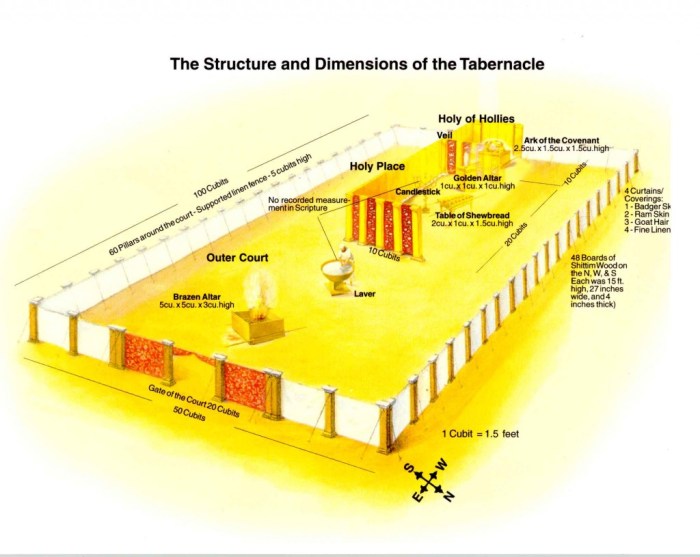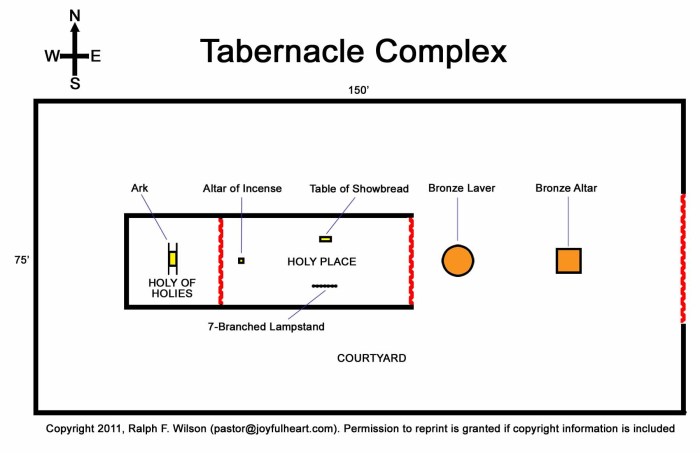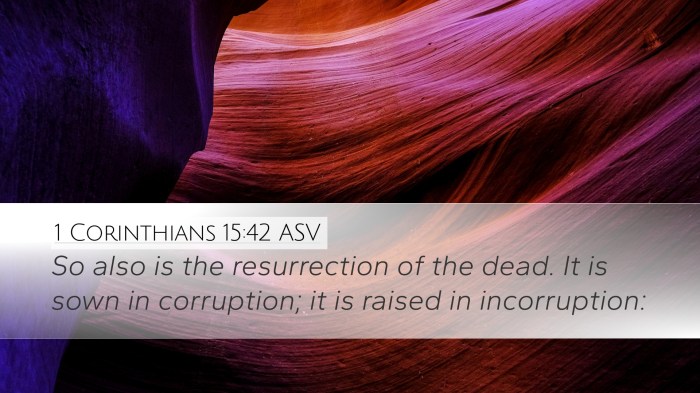Delving into the diagram of the tabernacle in Exodus unveils a captivating tapestry of ancient Israelite worship and religious practices. This intricate structure, meticulously detailed in the biblical text, served as the central sanctuary for the Israelites during their wilderness wanderings, embodying the divine presence among them.
As we embark on this exploration, we will dissect the tabernacle’s overall layout, scrutinize its materials and construction techniques, and delve into the significance of its interior furnishings and priestly garments. Moreover, we will uncover the rituals and ceremonies that imbued the tabernacle with spiritual meaning and examine its profound historical and cultural context.
Diagram Structure

The diagram of the tabernacle in Exodus provides a detailed plan for the construction and layout of the sacred dwelling place for the Israelites. It consists of three main sections: the outer court, the holy place, and the most holy place.
The outer court, surrounded by a fence of linen curtains, contained the altar of burnt offering and the laver for washing. The holy place, separated from the outer court by a veil, housed the table of showbread, the golden lampstand, and the altar of incense.
The most holy place, the innermost sanctuary, contained the ark of the covenant, which held the tablets of the Ten Commandments.
Materials and Construction
The tabernacle was constructed using a variety of materials, including gold, silver, bronze, wood, and linen. The use of these materials was significant, as they represented the purity, durability, and holiness of the dwelling place.
The framework of the tabernacle was made of acacia wood, a durable and strong material. The walls were covered with linen curtains, which were adorned with intricate embroidery. The roof was made of multiple layers of fabric, including goat hair, ram skins, and badger skins, providing insulation and protection from the elements.
Interior Furnishings
The tabernacle contained a variety of furnishings, each with a specific purpose and significance.
- Table of Showbread:A table located in the holy place, on which twelve loaves of bread were placed to represent the twelve tribes of Israel.
- Golden Lampstand:A seven-branched lampstand that provided light for the holy place, symbolizing the presence of God.
- Altar of Incense:An altar where incense was burned daily, representing the prayers of the people.
- Ark of the Covenant:A sacred chest located in the most holy place, which contained the tablets of the Ten Commandments.
Priestly Garments
The priests who served in the tabernacle wore specific garments, which symbolized their holiness and their role as mediators between God and the people.
- Linen Tunic:A simple white tunic worn by all priests, representing purity and righteousness.
- Ephod:A richly embroidered garment worn over the tunic, representing the priest’s authority and dignity.
- Breastplate:A square-shaped piece of cloth worn on the chest, containing twelve precious stones representing the twelve tribes of Israel.
- Mitre:A turban-like headdress worn by the high priest, symbolizing his leadership and authority.
Rituals and Ceremonies
The tabernacle was the site of various rituals and ceremonies, which played a central role in Israelite worship.
- Daily Sacrifices:Burnt offerings and grain offerings were made on the altar of burnt offering twice a day.
- Sabbath:A day of rest and worship, marked by special offerings and ceremonies.
- Day of Atonement:An annual ceremony where the high priest entered the most holy place to make atonement for the sins of the people.
Historical and Cultural Context, Diagram of the tabernacle in exodus
The tabernacle was constructed during the Israelites’ wilderness wanderings, after their liberation from slavery in Egypt. It served as a portable sanctuary for the people, providing a place for them to worship and encounter God.
The tabernacle was a unique structure that reflected the Israelite’s nomadic lifestyle and their relationship with God. It was a symbol of God’s presence among his people and played a central role in the development of Israelite worship.
User Queries: Diagram Of The Tabernacle In Exodus
What was the purpose of the tabernacle in Exodus?
The tabernacle served as a portable sanctuary for the Israelites during their wilderness wanderings, providing a sacred space for worship and the dwelling place for God’s presence among them.
What were the key sections and components of the tabernacle?
The tabernacle consisted of three main sections: the outer court, the holy place, and the most holy place. Each section housed specific furnishings and objects used in religious rituals and ceremonies.
What materials were used to construct the tabernacle?
The tabernacle was constructed using a variety of materials, including gold, silver, bronze, acacia wood, and various fabrics. These materials held symbolic meanings and represented the abundance and divine nature of the sanctuary.
What rituals and ceremonies took place in the tabernacle?
The tabernacle was the site of various rituals and ceremonies, including sacrifices, offerings, and purification rites. These rituals were performed by the priests and played a central role in Israelite worship and the maintenance of their covenant with God.

